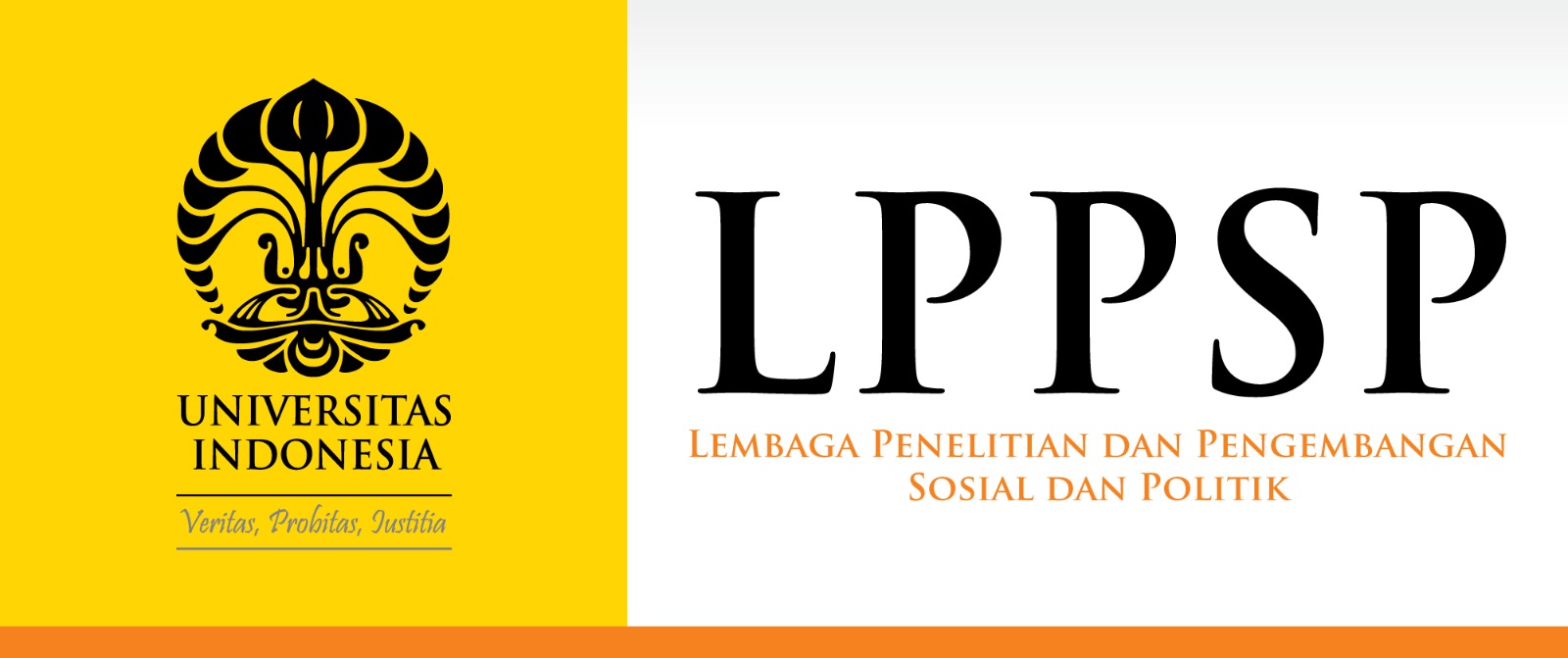JURNAL KOMUNIKASI INDONESIA
Abstract
Cyberbullying has become a crucial issue that continues to develop in line with the advancement of technology. This study is presented to show that cyberbullying can be analyzed through the perspective of communication science, particularly since cyberbullying can be found on the social media WhatsApp. This article aims to reveal the intensity of junior high school (sekolah menengah pertama – SMP) students’ involvement in cyberbullying via the social media WhatsApp, and their responses to being a victim of cyberbullying. The research employed a survey method by involving 281 randomly selected respondents from six SMPs in Yogyakarta Municipality. Data collection was carried out by using a questionnaire. The study found that all the students, who were respondents in the research, had been involved in at least one out of the seven types of cyberbullying, which are flaming, harassment, denigration, impersonation, outing and trickery, exclusion, and cyberstalking. The intensity of the student’s involvement varies and is identified to be in the low and moderate categories. Exclusion is the most common type of cyberbullying often experienced by the students, while impersonation is categorized as having the lowest intensity. In the study, more students in seventh grade were found to be victims of cyberbullying.
References
Aboujaoude, E., Savage, M., Starcevic, V., & Salame, W. (2015). Cyberbullying: Review of an old problem gone viral. Journal of Adolescent Health, 57(1), 1-10. DOI: 10.1016/j.jadohealth.2015.04.011.
Aizenkot, D. & Kashy-Rosenbaum, G. (2018). Cyberbullying in whatsapp classmates’ groups: Evaluation of an intervention program implemented in Israli elementary and middle schools. New Media & Society, 20(12), 4709-4727. DOI: 10.1177/1461444818782702.
Alhabash, S. & Ma, M. (2017). A tale of four platforms: Motivations and uses of Facebook, Twitter, Instagram, and Snapchat among college students? Social Media + Society, 1-13. DOI: 10.1177/2056305117691544.
Anderson, M. & Jiang, J. (2018). Teens, social media & technology 2018. Pew Research Center: Internet & Technology. https://www.pewinternet.org/2018/05/31/teens-social-media-technology-2018/. Accessed on January 4, 2019.
Aoyama, I., Utsumi, S., & Hasegawa, M. (2012). Cyberbullying in Japan: Cases, government reports, adolescent relational aggression, and parental monitoring roles. In Q. Li, D. Cross, & P. K. Smith (Eds.), Cyberbullying in the global playground: Research from international perspectives (p. 183–201). Wiley-Blackwell. DOI: 10.1002/9781119954484.ch9.
Barlett, C. & Coyne, S. M. (2014). A meta-analysis of sex differences in cyber-bullying behavior: The moderating role of age. Aggresive Behavior, 40(5), 478-488. DOI: 10.1002/ab.21555.
Barlett, C. P. & Gentile, D. A. (2012). Attacking others online: The formation of cyberbullying in late adolescence. Psychology of Populer Media Culture, 1(2), 123-135. DOI: 10.1037/a0028113.
Belsey, B. (2004). Cyberbullying: An emerging threat to the “Always On” generation. http://www.cyberbullying.ca/pdf/Cyberbullying_Article_by_Bill_Belsey.pdf.Accessed on March 27, 2018.
Bhat, C. S., Chang, S., & Linscott, J. A. (2010). Addressing Cyberbullying as a Media Literacy Issue. New Horizon in Education, 58(3), 34-43.
Buckingham, D. (2007). Digital literacies: Rethinking media education in the age of the internet. Research in Comparative and International Education, 2(1), 43-55. DOI: 10.2304/rcie.2007.2.1.43.
Buckingham, D. (2015). Defining digital literacy: What do young people need to know about digital media?. Nordic Journal of Digital Literacy, 21-34.
Byrne, E., Vessey, J., & Pfeifer, L. (2018). Cyberbullying and social media: Information and interventions for school nurses working with victims, students, and families. The Journal of School Nursing, 34(1), 38-50. DOI: 10.1177/1059840517740191.
Cassidy, W., Faucher, C., & Jackson, M. (2013). Cyberbullying among youth: A comprehensive review of current international research and its implications and application to policy and practice. School Pshychology International, 34(6), 575-612. DOI: 10.1177/0143034313479697.
Cetin, B., Yaman, E., & Peker, A. (2011). Cyber victim and bullying scale: A study of validity and reliability. Computers & Education, 57(4), 2261–2271. DOI: 10.1016/j.compedu.2011.06.014
Cherry, K. (2020). “How Psychology Explains the Bystander Effect”. https://www.verywellmind.com/the-bystander-effect-2795899. Akses 6 April 2020
Coelho, V. A., Sousa, V., Marchante, M., Brás, P., & Romäo, A. M. (2016). Bullying and cyberbullying in Portugal: Validation of a questionnaire and analysis of prevalence. School Psychology International, 37(3), 223-239. DOI: 10.1177/0143034315626609.
Comparitech. (n.d.) About Comparitech. https://www.comparitech.com/about-us/. Accessed on April 26, 2020
Connell, N. M., Schell-Busey, N. M., Pearce, A. N., & Negro, P. (2013). Badgrlz? Exploring sex differences in cyberbullying behaviors. Youth violence and juvenile justice, 12(3), 209-228. DOI: 10.1177/1541204013503889.
Cook, S. (6 Maret, 2020). Cyberbullying facts and statistics for 2020. https://www.comparitech.com/internet-providers/cyberbullying-statistics/. Accessed onApril 13, 2020.
Davison, C. B., & Stein, C. H. (2014). The dangers of cyberbullying. North American Journal of Psychology, 16(3),595-606.
De Goede, I. H. A., Branje, S. J. T., Delsing, M. J. M. H., Meeus, W. J. H. (2009). Linkages over time between adolescents’ relationship with parents and friends. Journal of Youth and Adolescence, 38(10), 1304-13-15. DOI: 10.1007/s10964-009-9403-2.
Febrianti, R. & Hartana, G. (2014). Cyberbullying pada mahasiswa Universitas Indonesia. Unpublished undergraduate thesis, Universitas Indonesia, Jakarta, Indonesia.
Goodman, S. (2014, 10 Juni). Social media literacy: The 5 key concepts. Edutopia. https://www.edutopia.org/blog/social-media-five-key-concepts-stacey-goodman.Accessed onApril 17, 2020.
Hana, D. R., & Suwarti. (2019). Dampak psikologis peserta didik yang menjadi korban cyberbullying. PSISULA : Prosiding Berkala Psikologi, 1, 20-28. DOI: 10.30659/psisula.v1i0.7685
Hendrian, D. (2018, 31 Januari). Sosmed & game online jadi pemicu bullying anak. KPAI.https://www.kpai.go.id/berita/sosmed-game-online-jadi-pemicu-bullying-anak. Accessed onApril 3, 2020.
Hinduja, S. & Patchin, J. W. (2012). Cyberbullying: Neither an epidemic nor a rarity. European Journal of Developmental Psychology, 9(5), 1-5. DOI: 10.1080/17405629.2012.706448.
Hinduja, S. & Patchin, J. W. (2014). Cyberbullying Identification, Prevention, and Response. Cyberbullying Research Center. www.cyberbullying.us.
Israyana, D. (2018). Cyberbullying dalam kolom komentar LINE Webtoon Lookism (Analisis isi kuantitatif kolom komentar LINE Webtoon Lookism). Unpublished undergraduate thesis, UniversitasGadjahMada, Yogyakarta, Indonesia.
Kim, S., Kimber, M., Boyle, M., &Georgiades, K. (2019). Sex differences in the association between cyberbullying victimization and mental health, substance use, and suicidal ideation in adolescents. The Canadian Journal of Psychiatry, 64(2), 126-135. DOI: 10.1177/0706743718777397.
Kowalski, R., Giumetti, G. W., Schroeder, A.N., & Lattanner, M. R. (2014). Bullying in the Digital Age: A Critical Review and Meta-Analysis of Cyberbullying Research Among Youth. Psychological Bulletin, 140(4), 1073–1137. DOI: 10.1037/a0035618.
Lee, E. B. (2017). Cyberbullying: Prevalence and predictors among African American young adults. Journal of Black Studies, 48(1), 57-73. DOI: 10.1177/0021934716678393.
Li, Q. (2006). Cyberbullying in schools. School Psychology International, 27, 157-170. DOI: 10.1177/0143034306064547.
Livingstone, S. & Brake, D. R. (2010). On the rapid rise of social networking sites: New findings and policy implications. Children and Society, 24(1), 75-83. DOI: 10.1111/j.1099-0860.2009.00243.x
Maharani, F. D., Nuranna, F. S., Ranadireksa, A., Hadyanto, D. T., & Lucky, W. N. (2016). Cakap bermedia sosial: Cerdas, kreatif, produktif. Jakarta: Ditjen IKP dan Kominfo.
Maradewa, R. (2019, 24 Juli). KPAI sebut anak korban kejahatan dunia maya capai 679 kasus. KPAI. https://www.kpai.go.id/berita/kpai-sebut-anak-korban-kejahatan-dunia-maya-capai-679-kasus. Accessed onApril 3, 2020.
Meilawati, F. A. (2016). Media sosial, remaja, dan cyberbullying (Studi kasus tentang pengetahuan dan ragam perilaku cyberbullying melalui media sosial Facebook di kalangan pelajar SMAN 1 Purwekerto). Unpublished undergraduate thesis, UniversitasGadjahMada, Yogyakarta, Indonesia.
Nasrullah, R. (2015). Perundungan siber (cyber-bullying) di status facebook divisi humas Mabes Polri. Jurnal Sosioteknologi, 14(1), 1-11. DOI: 10.5614%2Fsostek.itbj.2015.14.1.1.
Neuman, W. L. (2014). Social Research Methods: Qualitative and Quantitative Approaches: Pearson New International Edition. Pearson Education Limited.
Nilan, P., Burgess, H., Hobbs, M., Threadgold, S., & Alexander, W. (2015). Youth, social media, and cyberbullying among Australian youth: “Sick friends”. Social Media + Society, 1-12. DOI: 10.1177/2056305115604848.
O’Keeffe, G. S., Clarke-Pearson, K., & Council on Communications and Media. (2011). The impact of social media on children, adolescents, and families. Pediatrics, 127(4), 800-804. DOI: 10.1542/peds.2011-0054.
Patchin, J. W. & Hinduja, S. (2006). Bullies move beyond the schoolyard: A preliminary look at cyberbullying. Youth Violence and Juvenile Justice, 4(2), 148-169. DOI: 10.1177/1541204006286288.
Riffaudin, (2016). Fenomena cyberbullying pada remaja: Studi analisis media facebook. Jurnal Ilmu Perpustakaan, Informasi, dan Kearsipan Khizanah Al-Hikmah, 4(1), 35-44. DOI: 10.24252/kah.v4ila3.
Roche, S. (2005). Protect Your Children from Internet and Mobile Phone Dangers: An Easy-to-understand Handbook for Worried Parents. 2nd ed. UK: Sparkwave.
Sartana & Afriyeni, N. (2017). Perundungan maya (cyber bullying) pada remaja awal. Jurnal Psikologi Insight, 1(1), 25-39.
Sarwar, B., Zulfiqar, S., Aziz, S., & Chandia, K. E. (2018). Usage of social media tools for collaborative learning: The effect on learning success with the moderating role of cyberbullying. Journal of Educational Computing Research, 1-34. DOI: 10.1177/0735633117748415.
Setyawan, D. (2017, 4 Oktober). KPAI nilaisekolahberperanpentinguntukhentikan bullying. https://www.kpai.go.id/berita/kpai-nilai-sekolah-berperan-penting-untuk-hentikan-bullying.Accessed onApril 3, 2020.
Setyawan, D. (2017, 4 Oktober). KPAI terima aduan 26 ribu kasus bully selama 2011-2017.https://www.kpai.go.id/berita/kpai-terima-aduan-26-ribu-kasus-bully-selama-2011-2017. Accessed onApril 3, 2020.
Slonje, R. & Smith, P.K. (2008). Cyberbullying: Another Main Type of Bullying?. Scandinavian Journal of Psychology, 49(2), 147-154. DOI: 10.1111/j.1467-9450.2007.00611.x.
Smith, P. K. (2012). Cyberbullying and cyber aggression. In S. R. Jimerson, A. B. Nickerson, M. J. Mayer, & M. J. Furlong (Eds.), Handbook of school violence and school safety: International research and practice (pp. 93–103). New York: Routledge.
Tokunaga, R. S. (2010). Following you home from school: A critical review and synthesis of research on cyberbullying victimization. Computer in Human Behavior, 26(3), 277-287. DOI: 10.1016/j.chb.2009.11.014.
Topcu, C. & Baker, O. (2010). The revised cyber bullying inventory (RCBI): Validity and realibility studies. Procedia – Social and Behavioral Sciences, 5, 660-664. DOI: 10.1016/j.sbspro.2010.07.161.
Topcu, C., Erdur-Baker, O., & Capa-Aydin, Y. (2008). Examination of cyberbullying experiences among Turkish students from different school types. Cyberpsychol Behav, 11(6), 643-648. DOI: 10.1089/cpb.2007.0161.
Van Geel, M., Vedder, P., & Tanilon, J. (2014). Relationship between peer victimization, cyberbullying, and suicide in children and adolescents: a meta-analysis. JAMA pediatrics, 168(5), 435-442. DOI: 10.1001/jamapediatrics.2013.4143.
Vazsonyi, A. T., Jiskrova, G. K., Özdemir, Y., & Bell, M. M. (2017). Bullying and cyberbullying in turkish adolescents: Direct and indirect effects of parenting processes. Journal of Cross-Cultural Psychology, 48(8), 1153-1171. DOI: 10.1177/0022022116687853.
Wade, A. & Beran, T. (2011). Cyberbullying: The new era of bullying. Canadian Journal of School Psychology, 26(1), 44-61. DOI: 10.1177/0829573510396318.
Wang, J., Iannotti, R. J., Nansel, T. R. (2009). School bullying among adolescents in the United States: Physical, verbal, relational, and cyber. Journal of Adolescent Health, 45, 368-375. DOI:10.1016/j.jadohealth.2009.03.021.
Washington, E. T. (2015). An overview of cyberbullying in higher education. Adult Learning, 26(1), 21-27. DOI: 10.1177/1045159514558412.
Weiten, W. & Lloyd, M.A. (2006). Psychology Applied Modern Life: Adjustment In The 21st Century. (8th Ed.). California: Thomson Higher Education.
Willard, N. (2007). Cyberbullying and cyberthreats: Responding to the challenge of online social aggression, threats, and distress. Illinois: Research Press.
Yilmaz, H. (2011). Cyberbullying in turkish middle schools: An exploratory study. School Psychology International, 32(6), 645-654. DOI: 10.1177/0143034311410262.
Yuliati, R. & Saptyasari, A. (2019). Cyberbullying involvement: Impacts of violence exposure in the media, family, society, and school. Jurnal Komunikasi Indonesia, 8(1), 5-11. ISSN 2301-9816.
Zhou, Z., Tang, H., Tian, Y., Wei, H., Zhang, F. & Morrison, C. M. (2013). Cyberbullying and its risk factors among Chinese high school students. School Psychology International, 34(6), 630-647. DOI: 10.1177/0143034313479692.
Recommended Citation
Riyayanatasya, Yy Wima and Rahayu, Rahayu
(2020)
"Involvement of Teenage-Students in Cyberbullying on WhatsApp,"
JURNAL KOMUNIKASI INDONESIA: Vol. 9:
No.
1, Article 1.
DOI: 10.7454/jki.v9i1.11824
Available at:
https://scholarhub.ui.ac.id/jkmi/vol9/iss1/1
Included in
Gender, Race, Sexuality, and Ethnicity in Communication Commons, International and Intercultural Communication Commons, Social Influence and Political Communication Commons




